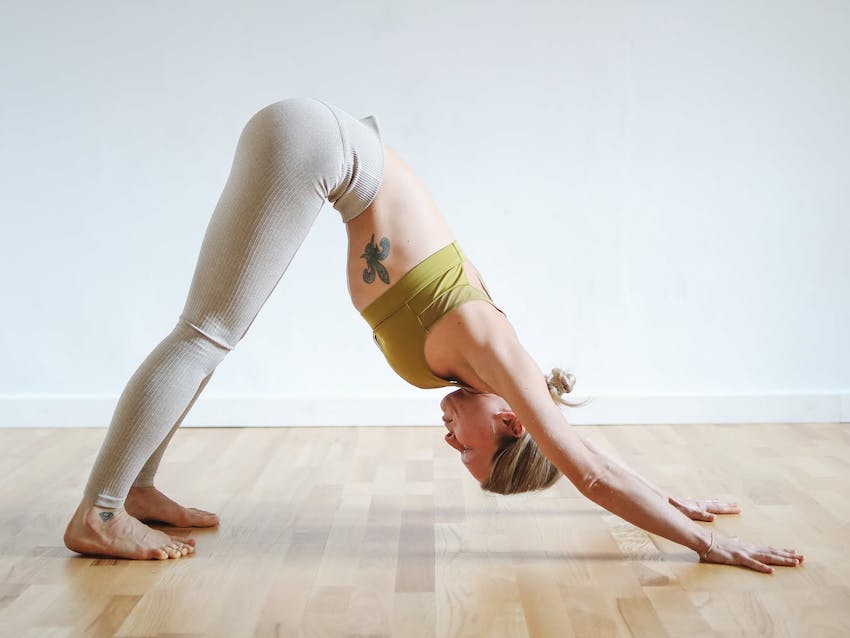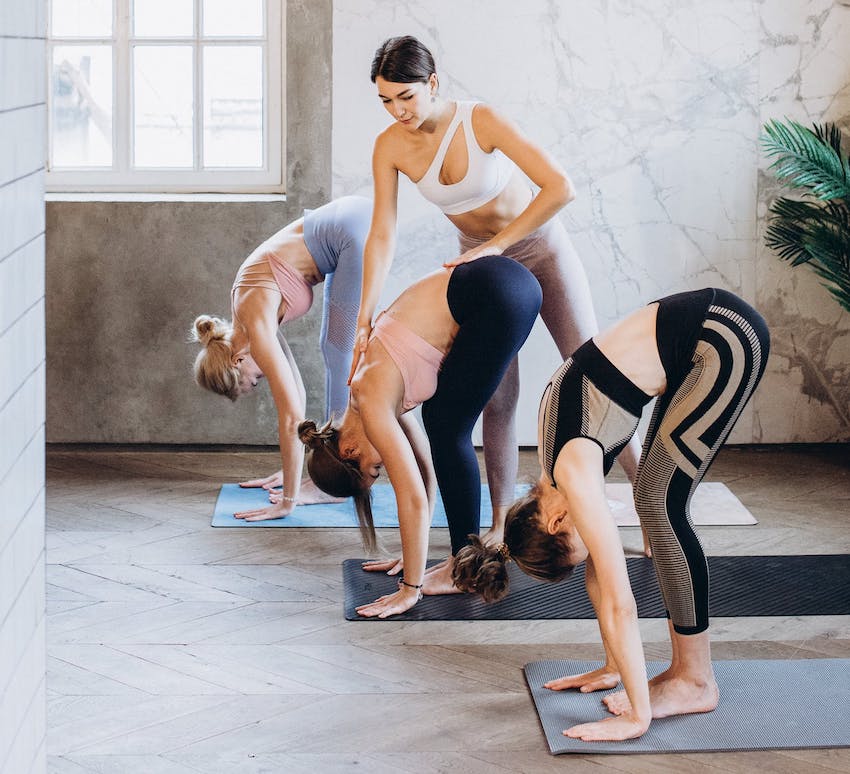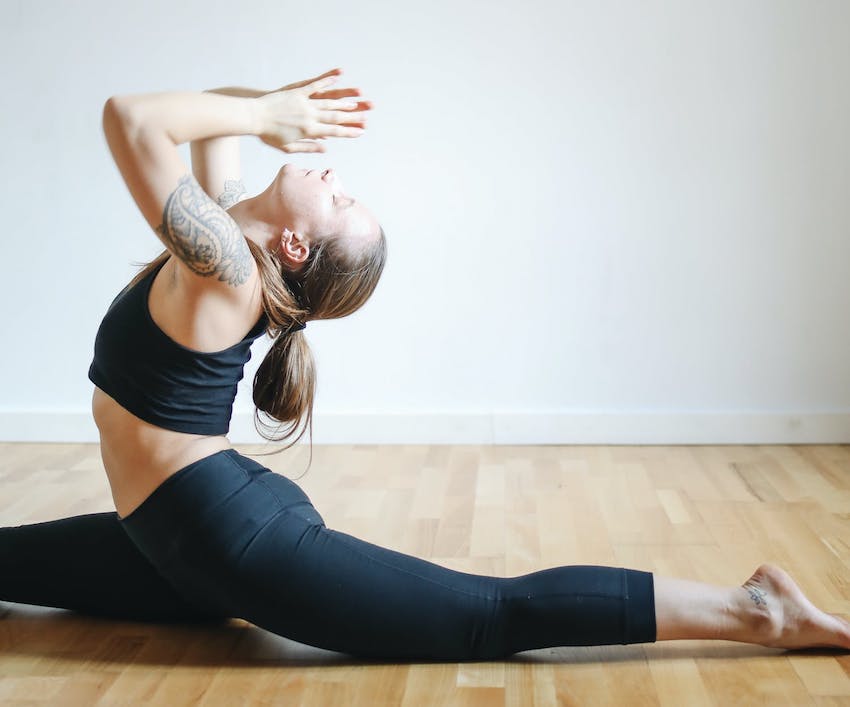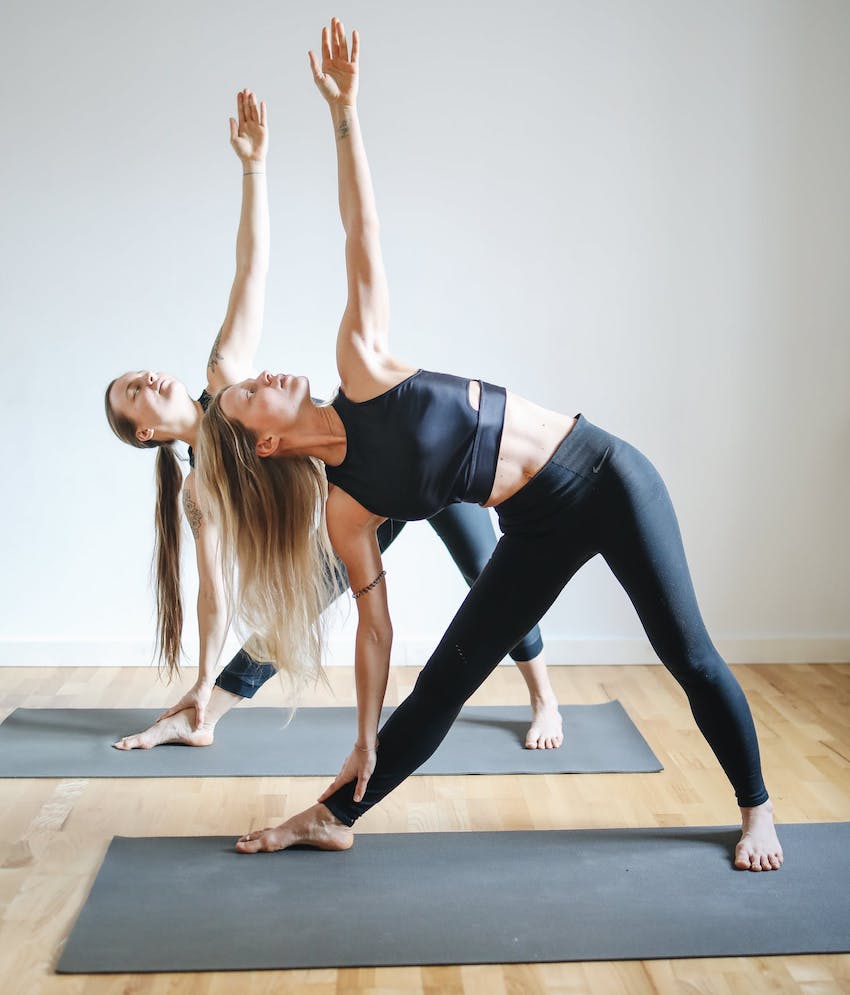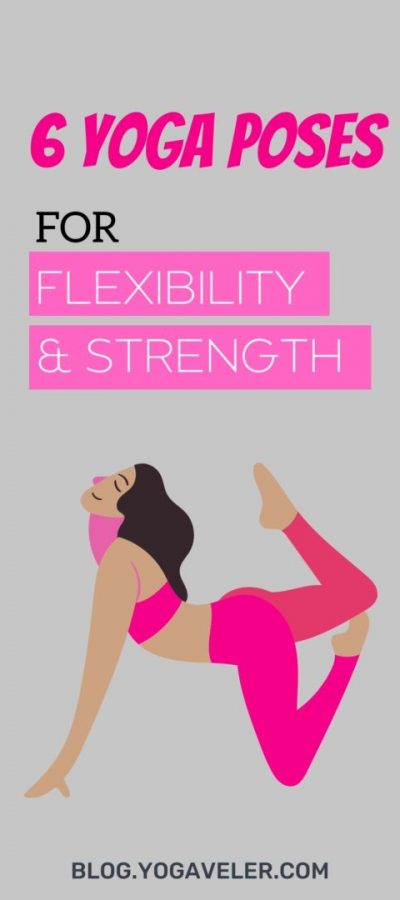6 Yoga Poses for Flexibility and Strength
Looking to improve your flexibility and strength using yoga asanas?
In this guide, we are going to focus on six yoga poses that, if practice regularly, will help you increase your flexibility faster while lengthening and stretching your muscles in a safe and effective manner.
Include these poses in your daily yoga routine and you will see your flexibility soaring in 2 weeks’ time.
Did you know that flexibility and stress relief are people’s most popular reasons for starting yoga?
Practicing yoga regularly has MANY health benefits for your body, mind, and spirit.
But let’s get on with the flexibility part!
1.Downward Facing Dog – Adho Mukha Svanasana
This posture can be difficult to achieve for beginners. Because to enter this posture, it is better to be flexible, and paradoxically, it will bring flexibility to those who do not have it!
The principle of the downward facing dog, or Adho Mukha Svanasana in Sanskrit, is first and foremost to stretch the spine.
This posture also allows the stretching of the shoulders, and legs.
A less difficult practice of this asana can be attained by bending your knees since the important thing is to focus on the spine.
Over time, you will be able to stretch your legs further and further until you are able to put your heels on the floor. This posture not only develops your flexibility but also your upper body strength..
2.Standing Forward Bend – Uttanasana
A classico !
This posture is “simply” to bend forward, arms extended to the ground.
And the small challenge is to see if you actually touch the ground!
This posture seems simple, but it is not that simple really. It is used in sun salutations.
As with the downward-facing dog, you can decrease the intensity of this asana by bending your knees when you relieving hips and back tension and move further to the complete position as you become stronger and more flexible.
It’s extremely important to keep your spine straight.
Contrary to popular belief, it is more important to keep your spine straight than is it to touch the ground.
If you do and go down with your upper torso straight, you will feel your hamstrings stretching a lot!
It will seem like you have zero flexibility at first but as you consistently practice the correct form you’ll see super fast improvements on your flexibility.
Remember good posture of the body is more important than touching the floor.
3.Tree Pose – Vrikshasana
The tree is a standing posture that tests your ability to balance.
And it also contributes to the flexibility of your hips. We do not necessarily think about it, but some people have stiff hips: runners for example. The tree or Vrikshasana in Sanskrit, is a very good solution!
Open your hip slowly, always at your own pace.
A less difficult version of this asana can be achieved by placing the branch leg in a lower position of the trunk leg.
4.Pigeon – Kapotasana
Like the tree pose, the pigeon pose is amazing for opening the hips and making them more flexible.
This posture is very comfortable and you can rest a few breaths with your head in your hands in relaxation.
It also helps to stretch the legs and back. In short, a complete posture that invites meditation (and sometimes a nap!).
5.King Dancer – Natarajasana
This is a more advanced pose that opens the hips and stretches the quads. An easier version of this pose can be attained by holding on to a wall or a chair.
The King Dancer pose is a great flexibility and balance exercise.
Learn and practice King Dancer pose with this video tutorial from Alo Moves:
6.The triangle – Trikonasana
At first glance, the triangle seems to be a rather easy position to achieve.
In reality, it requires several qualities: balance, resistance in the arms and legs, and also a little flexibility.
The triangle relaxes the legs but also the hips, another great position for relaxation.
Some yoga poses for flexibility and strength
2 key elements for gaining flexibility are effective practice and consistency.
To learn more about how yoga helps improve flexibility, read this article (click on the link).
Everyone has their own starting point as to how flexible they are.
This completely NORMAL and in order to gain more flexibility the first, and very important step, is
1- ACKNOWLEDGING WHERE YOU ARE AT
This is key to avoid pushing yourself too hard which can lead to injury.
Tendons strengthen themselves as they are stretched as a defense mechanism for the body.
This helps your leg (or any of your tendons) from going too far and overstretch themselves when you are doing any activity or even when you twist your ankle or make an unnatural movement.
After 15-20 seconds of keeping the stretch, the hardening reduces and you are able to move a little further.
Keep this in mind for tip number 2 which is:
2- HOLD YOUR STRETCH A LITTLE LONGER
It’s painful, yes a little.
Again, remember tip number one and do not over push yourself but stretching is painful.
Especially at the beginning, when your body is fighting against you stretching any further (remember tip number 2) so tip number 3 comes as an aid to tip number 2 to hold on to that stretch a little longer despite is not as comfortable as laying on the couch.
3- KEEP BREATHING NORMALLY, AND WHEN READY, STRETCH FURTHER WHILE EXHALING
Anybody who may be quite rigid at the beginning stages of the yoga practice will start to experience a remarkable improvement in how flexible the body becomes.
Remember effective practice and consistency.
There are thousands of yoga asanas, and many if not all of them allow your body to become more flexible and will outright transform it.
However, here is a list of 6 yoga asanas that will help you in your quest for flexibility faster.
One more thing before we jump right in.
Flexibility implies feeling your body, understanding it, learning how far or how short it can go, flexibility implies love for the body.
Feel the stretch and the flow. Remember, always take deep breaths and your body and mind will feel balanced and rejuvenated after each practice.
Conclusion
So there you have it, the practice of yoga can make your body more flexible, giving your muscles and your joints a greater range of motion.
Doing yoga regularly is a sure way to become more flexible among several other benefits.
To learn more about the different yoga benefits, you can read this article: Demystifying What is Yoga
Being consistent with these yoga asanas will increase your flexibility and range of motion.
I promise in two weeks you will be impressed as to what you can do with your body.
Good luck on your journey and see you soon!
If you found this post useful, you might want to save THIS PIN below to your Pinterest Yoga board to check the post later.


